Farmer of the Month: Tyler Hollenbach of Subarashii Kudamono
- By Lex Flamm
- Reading Time: 5 mins.
Every spring, the AsaJu Asian pear trees in Subarashii Kudamono’s orchards release a shower of delicate white petals. The falling flowers reveal tiny pears the size of marbles—and that’s when the real work begins. Orchard manager Tyler Hollenbach and his crew work their way up and down the rows of trees, swaddling each petite pear by hand in a wax-lined bag.
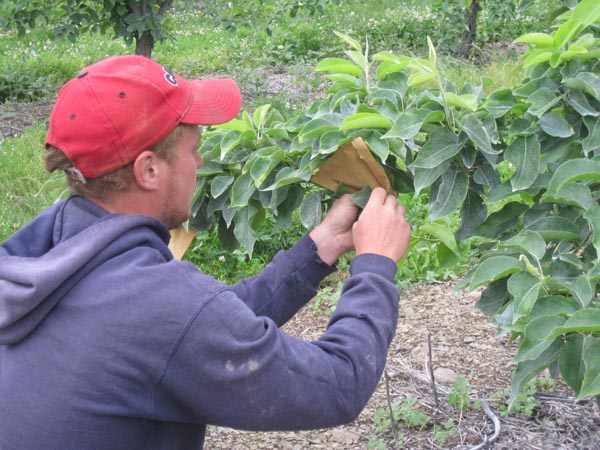
“The bag keeps the sun from hitting the pear because the sun’s rays, when they hit this certain variety, they’ll cause russeting. Fruit russeting is a brown blemish all over the fruit,” Tyler told The FruitGuys. “… The bag prevents that from happening. That’s a very traditional Japanese thing.”

When we spoke to Tyler in August, the AsaJu harvest was well underway. Workers were plucking bags from the trees and unwrapping them to reveal pristine, white, gem-like fruits nestled inside. Some of those pears will be destined for The FruitGuys’ boxes, ready to surprise workers with their crunchy skin and explosion of lightly sweet honeydew-and-pluot flavor.
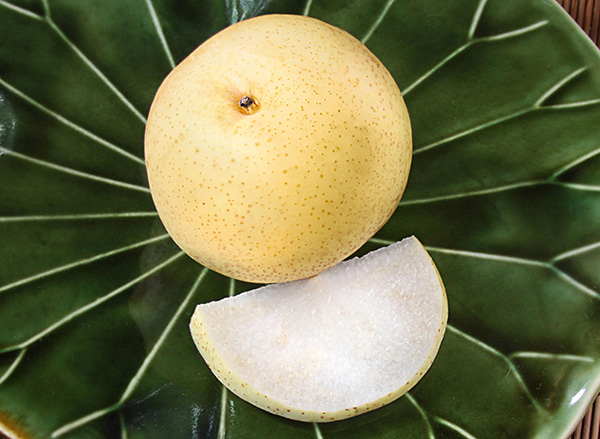
Subarashii Kudamono (which means “wonderful fruit” in Japanese) is a truly unique farm. It’s tucked into Pennsylvania’s Lehigh Valley, across the world from Japan. Still, Tyler and his team exclusively grow Asian pears. Why? Well, it all goes back to a single bite of fruit.
The Pear That Changed Everything
In the 1970s, Joel Spira—inventor of the solid-state dimmer switch and founder of Lutron Electronics Co.—was on a business trip in Japan with his wife, Ruth Rodale Spira.
At a business meeting, Joel became “fascinated by the traditional culture of Japan and how fruit was served, and how fruit was presented, and what fruit meant to people,” Subarashii Kudamono General Manager Mike Maholick told The FruitGuys. “[Joel] tried one of these Asian pears and said, ‘Wow, this could be the best-tasting fruit I’ve ever eaten! I wonder if these will grow in Pennsylvania?’”
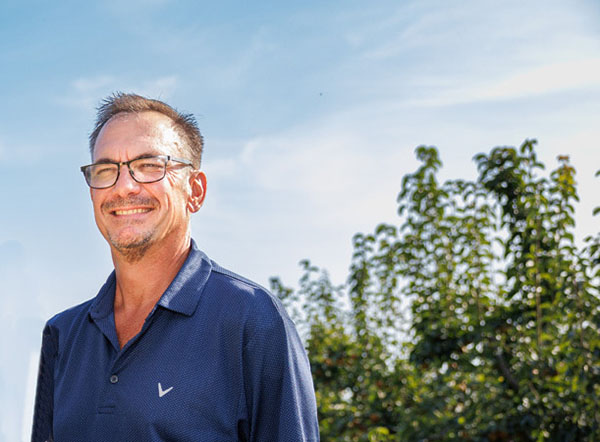
Asian pears are an ancient fruit, with the round shape and crunch of an apple, the juicy interior of a pear, and a delicate tropics-meets-pear flavor all their own. It’s likely that all European and American pears, like the Bosc and Bartlett, can trace their roots back to Asia.
When the Spiras flew home, they used Asian pear seeds to start a backyard orchard, and in 1984, Subarashii Kudamono was born.
Seven Patented Varieties
The Spiras loved the Asian pears they tried in Japan, but they had a hunch that they wouldn’t have broad appeal to the sugar-loving American palate. Luckily, Ruth Rodale Spira was a botanist. She diversified Subarashii’s Asian pear trees into sweeter, American-style varieties that became resistant to pests and adapted to the Pennsylvania weather.
When the trees flourished, the Spiras began selling their pears in traditional Japanese-inspired gift boxes. Later, they also turned them into dried pear snacks, pear spread, and pear vinegar.
Joel Spira and Ruth Rodale Spira passed away more than five years ago. But the farm is still a family business, and Ruth’s varieties live on! Today, Subarashii grows seven unique patented varieties of Asian pears, including the AsaJu, New Pear, JunoSan, EliSan, AnaSan, LiliSan, and SuSan.
Mike is a fan of the EliSan, which he said has “the most exotic flavor” with hints of tropical fruit, kiwi, and Granny Smith apple. Though each variety has a different flavor profile, they all get a boost from the unique terroir of the Lehigh Valley. There, the trees extend deep roots through shaley soil, drawing on mineral-rich groundwater dozens of feet down.
“That’s where the flavor comes from,” Mike told The FruitGuys.
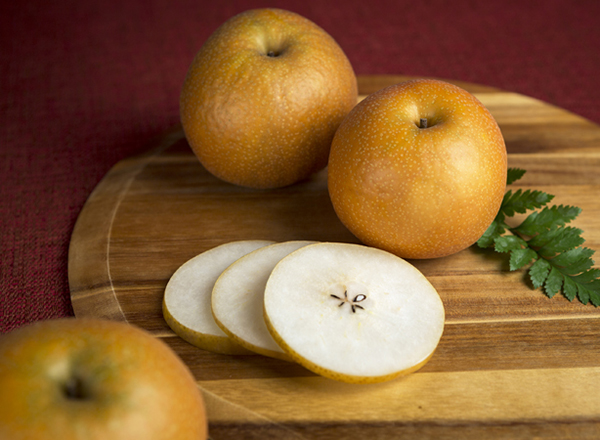
Tyler, who grew up farming in the Lehigh Valley before coming to work for Subarashii ten years ago, said, “It all comes together in Pennsylvania. We’re lucky that all of the stars align to make it happen.”
This fall, the stars have aligned for a truly delicious pear season.
The 2024 Asian Pear Season
The Subarashii Kudamono team begins harvesting Asian pears in August and continues picking through September and November. This year, Tyler told us that the hot, dry weather has worked in his favor, producing extra sweet and flavorful fruit.
Too much rain can cause the pears to swell, diluting the sugars in the fruit and making the flavor notes more muted. So he has his fingers crossed for a dry fall, too.
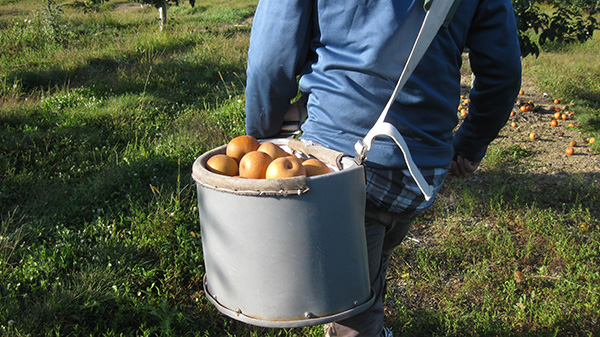
The farm also uses traditional Japanese growing practices to improve the flavor of the fruit, like bagging the AsaJu pears, cutting the trees back significantly each winter, and doing everything from pruning to harvesting by hand. This year, Subarashii also invested in a large wind turbine that mixes and warms the air in the orchard, helping protect the pears from frost damage.
Tyler and Mike called farming a “nonstop uncertain adventure,” but they both take pride in their work.
“What I enjoy most about being in the farming industry is just providing food for people,” Tyler said. “Who doesn’t like the idea of growing something that someone can enjoy and really seeing it from start to finish?”
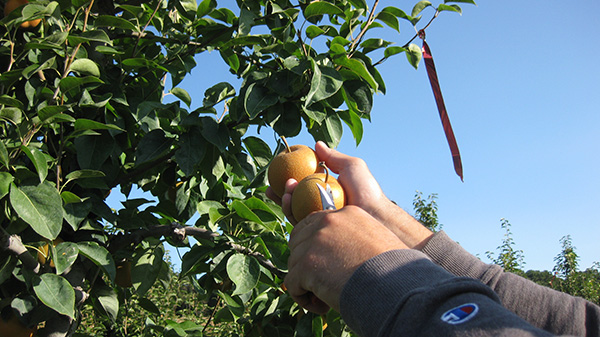
The FruitGuys has partnered with Subarashii Kudamono since 2007, helping share its fruit far and wide. The farm is celebrating its fortieth anniversary in 2024, and we’re excited to include multiple varieties of its Asian pears in our East Coast and Central fruit mixes this fall. If you live in New York, Chicago, or Philadelphia, keep an eye out for this “wonderful fruit”!
Want farm-fresh fruit?
We've got you covered.FAQs About Asian Pears
We got these answers from the experts at Subarashii: Orchard Manager Tyler Hollenbach, General Manager Mike Maholick, and former Director of Marketing Holly Harter.
1. Where did Asian pears come from?
Asian pears originated in China and Japan more than 3,000 years ago. They’re one of the oldest cultivated fruits, and according to the folks at Subarashii, they’re actually descended from roses. Farmers created them by diversifying rose hips until they grew larger and fruitier.
2. Are Asian pears and European pears related?
Yes! Asian and European pears have a shared ancestry. According to Subarashii legend, all American and European pears descended from Asian pear varieties that spread worldwide with global trade.
3. Are Asian pears related to apples?
“Asian pears are not related to apples!” Holly said. “Their closest cousins are quince and pomegranate—pome fruits—but they are the grandaddies of all pears and that’s all she wrote.” The nickname “apple pear” is more about appearance than ancestry.
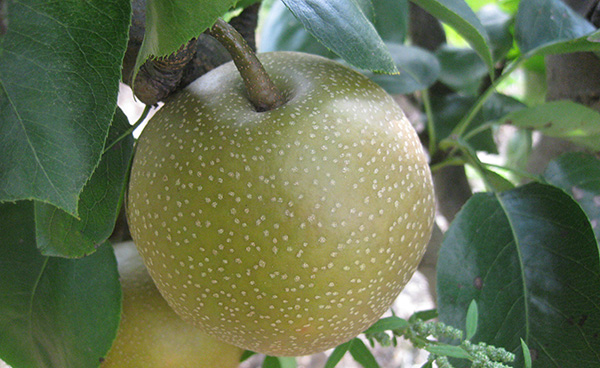
4. How do you ripen Asian pears?
Unlike American and European pears, Asian pears don’t improve in flavor after they’re picked. Each pear’s flavor profile is “locked in” as soon as it’s harvested. So, don’t try to ripen your Asian pears on the counter! Refrigerate them and enjoy them when they’re still firm and crisp, as they’re meant to be.
5. How do you store Asian pears?
Asian pears maintain the best flavor and texture when they’re stored in the fridge. As soon as your pears arrive, refrigerate them until you’re ready to snack.
6. Are all Asian pears grown in Asia?
Nope! Japan, China, and Korea are famous for their Asian pears, but farmers grow them all over the world, including in Pennsylvania.
